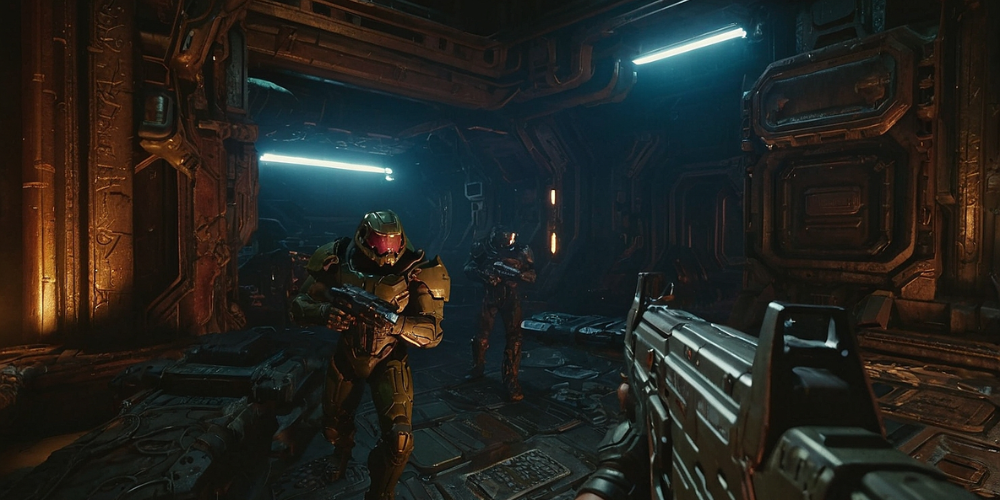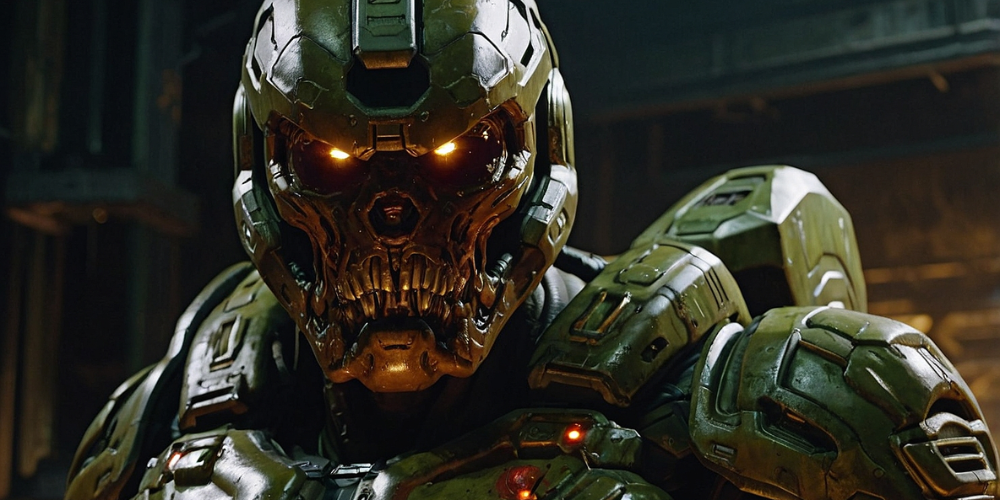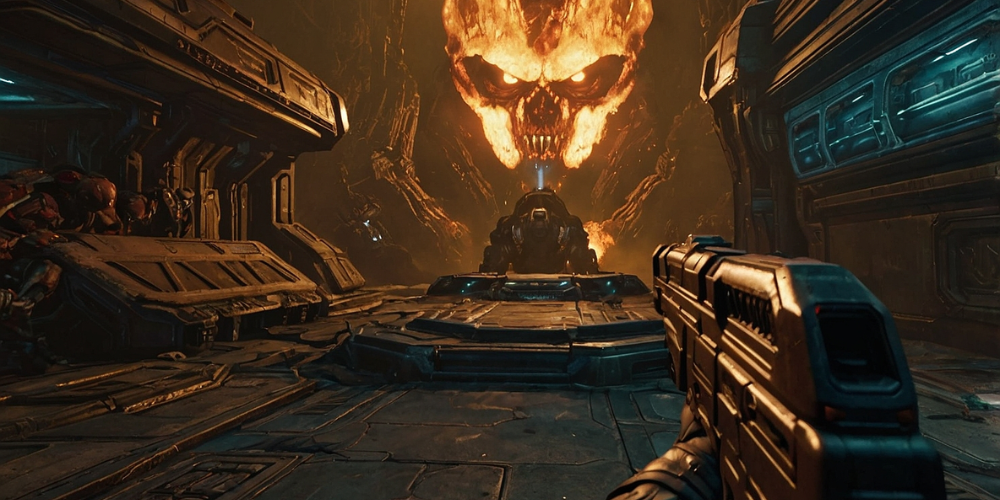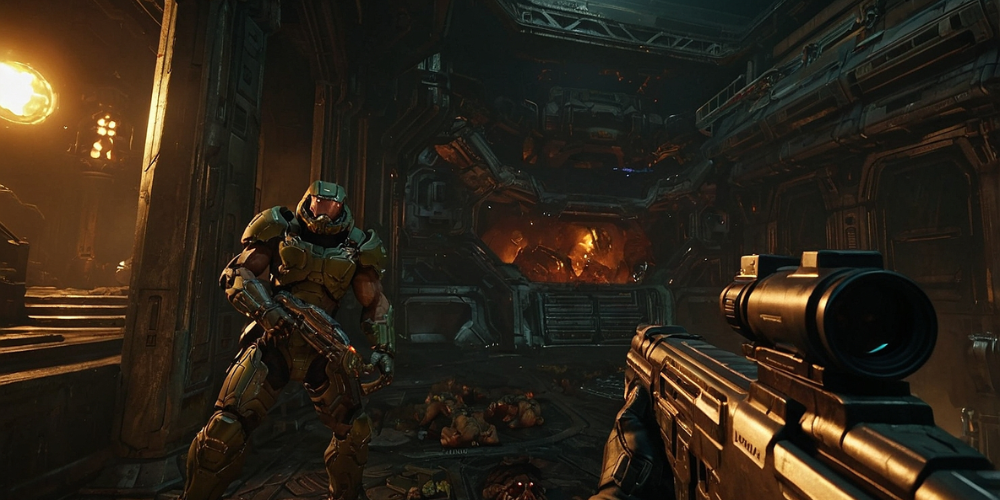The Influence of Doom on FPS Genre
- Oct 11, 2024
- 13

As I navigate through the pulsating corridors of a heavily pixelated world, memories of my first encounter with Doom flood my mind. The year was 1993, and I was positioned in front of my family’s clunky computer, my heart racing as I faced off against pixelated demons and gory monsters. Little did I know that this seemingly simplistic game would lay the foundational principles for the first-person shooter (FPS) genre, a realm I would immerse myself in for decades to come.
The Birth of a Genre
The inception of Doom marked a pivotal moment in gaming history. Before its arrival, the gaming world leaned heavily on 2D side-scroll experiences. Doom shattered this paradigm, allowing players to navigate a fully three-dimensional environment. With its revolutionary use of 3D graphics, I found myself genuinely feeling as though I was within the game, battling for survival against the forces of hell.
Innovative Gameplay Mechanics
Doom introduced several innovative gameplay mechanics that became staples in future FPS games. The concept of fast-paced movement and exploration became a significant component of my gaming experience. I often recall how the blend of speed and chaos required strategic thinking, driving me to maneuver and utilize weapons efficiently. The way I would dash through levels, dodging projectiles while simultaneously unleashing fire on enemies, built a dynamic that feels almost second nature now.

The Importance of Level Design
One of the most crucial aspects of Doom was its level design. Each map felt like a labyrinth brimming with secrets, hidden passages, and various enemy placements. I vividly remember the thrill of finding hidden areas, which often contained power-ups or shortcuts. This particular element of exploration has shaped my expectations for the intricate layouts in subsequent FPS titles.
Environmental Storytelling
Doom didn’t just accommodate mechanical innovation; it also embraced narrative without sacrificing gameplay. While the storyline was simplistic, environmental storytelling played a vital role in immersing me into the universe. Each room I entered was steeped in lore, often containing remnants of past events that hinted at a broader narrative. This masterpiece of reflections on horror and technology has supported a trend in gaming, linking narratives with immersive environments.
Impactful Sound Design
The auditory experience in Doom was unmistakably groundbreaking. The pulsating techno soundtrack and chilling sound effects heightened the tension, making every footstep echo in my chest. This powerful union of sound and fear captivated me, creating a fear-laden experience that haunted my gaming sessions. Future games took this formula, understanding that immersive audio is just as crucial as visual elements.

Multiplayer Gaming and Doom’s Legacy
Doom’s implementation of a multiplayer format fueled my competitive spirit and established the groundwork for future online battles. The existence of Deathmatch showcased a new way of playing, encouraging players to face off against each other in digital arenas. As I logged countless hours competing with friends, the competitive element grew, shaping the multiplayer systems we now take for granted in modern shooters.
The Role of Weapons and Power-ups
In Doom, the diverse arsenal at my disposal was intoxicating. The choices I made between shotguns, plasma rifles, and chainsaws significantly impacted my gameplay strategy. Power-ups introduced a layer of strategy, compelling me to decide when to seize enhancements or conserve them for tougher encounters. The intricate balance of weapon selection and situational awareness has influenced countless FPS titles, contributing to a rich tapestry of tactical gameplay.
Modding Culture: A Community in Action
The modding community around Doom was instrumental in expanding its lifespan. I recall scouring the internet for custom levels and modifications, many of which were developed by fellow gamers who shared my passion. The sheer creativity demonstrated by these individuals not only ensured Doom remained relevant but also inspired future developers to embrace modding as a pathway to engage with the player community, igniting a collaborative spirit that lasts to this day.

Brutal Aesthetics and the Art of Violence
The aesthetic violence portrayed in Doom paved the way for a specific artistic expression in gaming. The graphic brutality juxtaposed with the fast-paced gameplay established a harmony that excites and repulses simultaneously. As I became desensitized to the gore, it reflected a cultural commentary on violence in media, prompting numerous debates regarding the psychological effects on players. This challenging conversation initiated by Doom continues to resonate in discussions about video game content.
Evolution of Enemy Designs
The diversity of enemies in Doom presented a benchmark for future FPS games. Each foe had distinct behaviors and tactics I needed to understand. From the agile Imps to the formidable Cyber Demon, enemy variety ensured that I could never grow complacent. Future titles borrowed heavily from this template, fostering rich encounters that forced players to adapt and rethink their strategies in real-time.
Speed and Flow: A New Standard
The speed of gameplay in Doom set a new standard for the FPS genre. As I blitzed through levels, the rush of adrenaline became an integral part of my gaming experience. This focus on pace has been passed down through generations of shooters, cementing fast, fluid movement as a critical component that defines the thrill of modern FPS titles. The frantic energy of Doom is a feeling that I, along with countless players, actively seek in contemporary releases.
Artificial Intelligence in Doom
The enemy AI in Doom was rudimentary compared to today’s standards, yet it introduced elements that would be essential in later FPS designs. Monsters would hunt and react based on my actions, evoking a sense of danger and unpredictability. This foundational framework has been continuously developed, giving rise to more sophisticated AI systems that challenge players in novel ways, all while paying homage to Doom's pioneering spirit.

Competitive Nature and Speedrunning
The community around Doom has fostered a competitive nature that extends beyond casual gaming. The rise of speedrunning, in particular, has transformed how players interact with the game. I’ve witnessed a vibrant ecosystem of competitors seeking the fastest completion times for levels, sharing strategies and techniques that defy conventional gameplay approaches. This culture ensures that Doom remains not only a nostalgic experience but a contemporary challenge for gamers striving for excellence.
Legacy and Remakes: Keeping the Spirit Alive
The enduring legacy of Doom has resulted in numerous reboots and remakes, with each iteration striving to capture the essence of the original while adapting to modern gaming standards. I recall the excitement of experiencing Doom (2016) and Doom Eternal, where I saw familiar elements transformed into a new light while retaining the core aspects that made the original an icon. These remakes breathe fresh life into the franchise and solidify Doom’s status as a staple within the evolving FPS genre.
The Influence on Indie Developers
Indie developers have taken cues from Doom’s innovations, often reflecting its influence in their unique creations. While traversing through the latest wave of indie FPS titles, I can see its fingerprints on numerous projects. The simplicity, accessibility, and nostalgic charm of classic Doom inspire newfound creativity and innovation, ensuring that its impact resonates in games that challenge the status quo.
The Cultural Significance of Doom
The cultural significance of Doom extends beyond the gaming world, contributing to art, media, and even academic discourse. As I reflect on its journey, I see that Doom represents not just a game but also a movement that has shaped a generation and transformed an industry. Its influence on political discourse regarding gaming violence, its representation in popular films, and even its appearance in academic studies all speak to the broad reach and impact of this groundbreaking title.